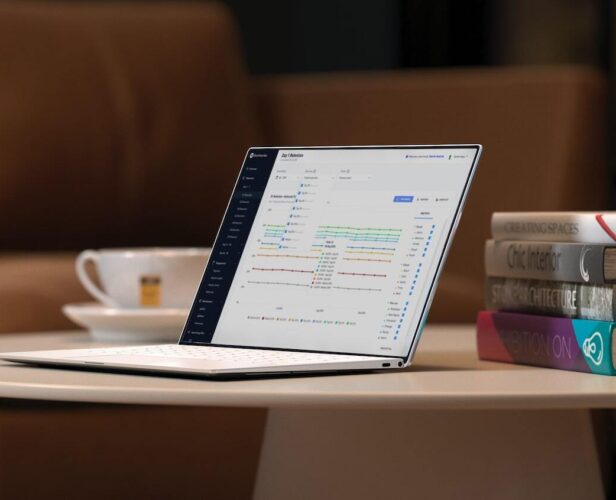Resources > All
Insights and tips about the games industry
Subscribe for gaming insights, industry reports and product updates delivered straight to your inbox.
#Game Mechanics
How to Use Collectibles in Mobile Games to Keep Players Coming Back
It’s easy to think of collectibles as frivolous add-ons to mobile games, and games in general. But when you get them right, collectibles can make your game more enjoyable, more sustainable, and more lucrative. Here’s a rundown of the key things to consider when you integrate collectibles into your game. What do we mean by collectibles? There are many different ways you can use the term. But let’s go with this as a general definition: Any bits of content that aren’t essential to progression through your game. That’s pretty broad. But it needs to be. Collectibles can include any of these things (and many more): Cosmetic items, like skins Heroes and characters Upgrades and power-ups Resources Achievements Informative items that expand your game’s lore Playful items that bring an amusing surprise In this blog, we’ve covered a few reasons why...
#Game Design
Adding Subtitles to Your Mobile Game – Dos and Don’ts
Subtitles might be one of the last things you think of. But they shouldn’t be – because they really do matter. Here are our thoughts on why, and some tips to help you get them right the first time. Subtitles are a must in today’s mobile games. And not just for gamers with hearing impairments. They’re important for lots of other ‘life’ reasons – people use them if they’re playing a game on public transport, because they have crappy speakers, if they’re trying not to disturb flatmates/children/significant others, and so on. While the numbers for mobile games aren’t really available yet, it’s clear that people playing on consoles are using subtitles – when Ubisoft tracked subtitle use on Assassin’s Creed: Origins, they found that 60% of players play with these switched on. And this is for a game that most...
#Data & Analytics
2020 in Metrics: Understanding Casual and Hypercasual Gaming Markets
2020’s been a year like no other. Casual and hypercasual gaming has fared better than most industries – overall playtime has been consistently up by around 15% on previous years. But when all of our usual social norms have been upended by global lockdowns, how do we make sense of the player metrics we rely on? I recently hosted a webinar on this topic. Using Benchmarks+ from GameAnalytics, I pulled some of the most telling player data from the first eight months of 2020. I dived into the key metrics like retention, session lengths, and playtime. And I did a deep dive specifically on hypercasual – comparing the different app stores and regions. Here’s a summary of the trends I found that will be most useful for developers to understand. The differences between iOS and Android It’s important not to...
#Guides
How to Make an Idle game: Everything You Need to Know About Incremental Mobile Games
Idle games present gamers with an opportunity to play games with long-term targets, test their problem-solving skills and gain incremental rewards over time. This sub-category of games can have impressive retention rates and session length when compared to other types of games. A GameAnalytics study revealed that idle game players have a stickiness of 18%, compared to 10.5% for other hyper-casual titles. They also show a higher number of sessions per day and a higher average session length (8 minutes). This article shares the essential insights you need when learning how to make an idle game. What is an idle game? Idle games are often categorized as hyper-casual games due to their ease of use and accessibility. However, they differ greatly from popular hyper-casual games such as Voodoo’s 5 Hoops and Ketchapp’s Origame. Idle games, which are also known as...
#Data & Analytics
Lessons from Lockdown: Making Casual Games in a Covid-19 World
In September we ran the first webinar in our Toolbox series: making casual games in a Covid-19 world. Joined by our friends at Adjust and TopOn, we covered what we’ve spotted, how to grow your casual game and how to advertise during the pandemic. Don’t worry if you missed it. You can catch the recordings and read up on the talks in this blog. It’s been an odd few months. Over that time, we’ve noticed a dramatic shift in the gaming industry: we’ve never seen so much playtime, traffic is at an all-time high and some countries have really surprised us. So we thought it’d be worth sharing the key metrics and banding together with Adjust and TopOn to give you some advice on how to make sure it’s your game beneath those idle thumbs. The webinar had three main...
#Strategies
How to Find Player LTV Blind Spots and Earn More From Your Game
The ecosystem of mobile ads in gaming has evolved to a point where it’s possible to understand what actions players took, and from this, learn how to generate the most Lifetime Value (LTV). Yet most tools out there are fairly new and, like many studios, you may be missing out by simply not integrating these into your typical work processes. To help give you a head start into what’s changed and why it’s important, we put together this guide on the most common blind spots for player LTV, and how to identify and address them to grow your game’s revenue and profitability. Let’s get started. Use the LTV metric to know which platform is performing the best The same game can perform very differently on Android compared to iOS. Even more so when you look across regions. In China, the...
#Game Deconstructions
Everything You Can Learn From Fall Guys: Ultimate Knockdown
When it comes to viral games, Fall Guys: Ultimate Knockdown is the game everyone is playing. I mean, Mediatonic recently were able to raise 1 million for Special Effect through auctioning off the ability to create an in-game skin. It’s currently out on Steam and PlayStation, with rumors it’ll be coming to mobile soon. So what made this game such a success? And what can we learn from here? In this article, I’ll answer just that. All while focusing on different takeaways from the game’s mechanics, levels, art and design, and how they built up their strong community. Let’s get into how Fall Guys works: Fall Guys takes the battle royale genre to a bright and colorful place, letting 60 online players struggle through silly levels, all trying to be the last one standing. To make matters more hectic and...
#Data & Analytics
What’s Their Secret? 4 Steps Successful Publishers Take to Find Hit Games
We’ve all asked ourselves this question: “How do publishers release hit game after hit game? How do they know which ones are going to be successful?”. Now, we don’t know all the ingredients to their secret sauce (be it their relationships with developers, network, or UA tools). But what we can do is go over what we know, and what we do best. Data. Data is a crucial part in finding the next big hit. But sifting through tens or hundreds of prototypes at one time is in itself, a massive challenge. Especially when your team is small. Step 1: Find more prototypes to evaluate In an ideal world, you’d open up your laptop and see key metrics (like day 1 retention, day 7, and Playtime) for a bunch of new games that were submitted yesterday. Well, you can. And...
#Ads & Monetization
How to Calculate CPI, CPC, eCPM and More
In our last foray into the mystical land of obscure acronyms, we explored terms like Daily Active Users (DAU). Today, we’re getting out our machetes and hacking away the mystery surrounding CPI, CPC, CPM, and more. So let’s get out the jargon repellant and start wading in the long grass. Heads up. There’s an online calculator for this stuff if you want to cut some corners. Check it out here. How to calculate CPI: Cost Per Install You can pick a date range or your total When you’re looking at your ad spend and installs, you’ll probably want to look at the last quarter’s figures. But this can really be any range you like. Last month. Last week. The whole lifetime of your game. It’s up to you. See whether less-direct marketing is working People are sometimes unpredictable, and often...
#Guides
Your 101 guide to email marketing to mobile apps
Email marketing is a critical part of a healthy overall marketing strategy. A study by the UK-based Direct Marketing Association (DMA) found that for every £1 you spend on email marketing, you can expect a return of £42. Additionally, Statista found that 49% of consumers like receiving weekly promotional emails from their favorite brands. But there are some common mistakes to avoid when adopting email marketing. In this guide to email marketing for mobile applications, we are going to: Define what email marketing means for mobile applications Discover why email marketing is important Outline how to build your email marketing strategy Share best practices for marketing your mobile apps via email What is an email marketing strategy? Marketing emails can be used to send regular newsletters, essential updates, and promotional offers to your users. You can be hugely successful at...
#Ads & Monetization
Designing battle passes in mobile games: the whats, whys, and hows
Battle passes have been around for a while now, but only recently so in mobile games. With the rise of battle royale games like Fortnite and PUBG, this new strategy is now proving to be a reliable source of revenue for mobile game developers alike. So, what makes a good battle pass? And should you add this to your monetization strategy? To answer this, I look at the best of the best, and see how top developers use this tactic in their games. But first, what are battle passes? Let’s first talk about what battle passes are. To put it simply, players purchase a plan, and usually get extra rewards, items, skins, and more (which aren’t normally available in the free version of the game, or even on the item store). These passes usually last a limited amount of time...
#Data & Analytics
How to calculate ARPU, ARPPU, ARPDAU and more
Metrics like Average Revenue Per User (ARPU) or Daily Active Users (DAU) are like the coins you collect in a platformer: you want to rack them up, they’re sometimes fiddly to find and if you get enough they’ll give your game an extra life. Knowing these figures helps you figure out what you need to improve, predict how much you’ll earn, set yourself realistic targets and – fingers crossed – persuade investors to give you funding. So how do you calculate and use them? This is the first part in our series on key metrics you’ll need to know and today we’re going to cover: DAU, ARPU, ARPPU and ARPDAU. How to calculate DAU: Daily Active Users Count the number of unique players doing any action in your app on each day. 1. You’ll need to decide on what defines...
#Ads & Monetization
Getting started with mobile ad mediation – a how-to guide
What’s ad mediation? And why should you care about it? To find out, we asked our friends at TopOn, a mediation platform for global monetization, to give us the lowdown. Here’s what they said… Nowadays, advertising monetization is one of the most popular profit models for mobile game and app developers. According to IDC the global mobile game, ad revenue in 2019 was nearly $20 billion. And it’s expected to reach $45.2 billion by 2023, which is an annual growth rate of about 26% (this is according to our Mobile Game Advertising and Monetization Report for H1 2020). But despite this, most developers are only scratching the surface when it comes to getting the most from mobile advertising. They’re still mainly relying on automatic functions to improve their in-game ad revenue, rather than trying out more advanced techniques (which can...
#Editor's pick
Game data pipeline: Building vs buying
As a large number of studios, publishers, and game developers are heavily relying on data to guide their decisions, they need to decide between building or buying. But which one is more efficient? To assist you in understanding the Total Cost of Ownership (TCO), we broke down the following key considerations: Setup requirements Cost calculation Team needs and recruitment
#Editor's pick
Mobile gaming benchmarks for Q1 2024
Uncover the industry’s performance with Q1 2024 benchmarks. Explore key metrics like retention rates and session engagement to benchmark your games against industry standards. What’s inside? Retention benchmarks for casual, classic, and mid-core games Session length benchmarks for games launched in North America, Europe, the Middle East, and Asia Session count benchmarks across 15 game genres
#Editor's pick
Grow your revenue with Xsolla Web Shop for Mobile Games
“Xsolla anticipated this seismic shift earlier this year, when we launched multiple products that are being actively used by some of the world’s largest game companies to increase profit and build closer relationships with their mobile and pc players. We’ve now combined these products and learnings into an elegant new solution called Xsolla Web Shop for Mobile Games,” said Chris Hewish, President of Xsolla. Through Xsolla Web Shop for Mobile Games, developers can expect significant revenue growth and can reach new players in new geographies previously unavailable to them. This solution solves many challenges developers face; such as discoverability, declining profit margins, lack of control over the user experience, access to localized payment methods, cross game marketing, more efficient user acquisition, effective collaboration with creators and influencers, and much more. Three industry-changing announcements make this opportunity more timely than ever:...
#Editor's pick
2023 Roblox report: Behind the data with GameAnalytics
Download a comprehensive report of Roblox player behavior and game performance based on GameAnalytics data from 2023. This report highlights critical benchmarks and insights to help Roblox creators optimize their games. What’s inside? Devices analysis Players’ daily session frequency Average revenue spent per user Session length and count benchmarks Retention benchmarks Revenue benchmarks
#Editor's pick
The Game Developer’s Handbook to Mastering Data Solutions
Data is the key to success in the ever-evolving landscape of game development. Explore this guide to transform your data into insights using our turn-key data solutions. What’s inside? Our comprehensive guide explores cost-saving strategies and real-world applications for advanced use cases. Learn how to seamlessly integrate data sources, unlock detailed player insights with Player Warehouse, access real-time data with Raw Export, and ensure data privacy compliance.
#Case study
Developing a #1 VR MMO: Ramen VR’s Journey with GameAnalytics
Discover how Ramen VR used data-driven game development to launch "Zenith: The Last City", which became the #1 bestselling game all major VR platforms—including Meta Quest/Rift, Steam and PlayStation VR.
#Editor's pick
Using AI to Supercharge Your Game Art Design
Discover how tweaking AI tool settings can help you generate varied art styles, produce better concepts, and speed up the process from prototype to final design. With AI on your team, creating unique game art has never been easier or faster.
#Editor's pick
Event Design & Tracking Guide for GameAnalytics
Learn how to create an adaptable tracking plan, enabling you to unlock richer insights and maximize the value of your data within GameAnalytics.
#Editor's pick
How studios use DataSuite to find hit games
Learn how successful publishers evaluate hundreds of games per month, to find the next hit game.
#Editor's pick
Among Us VR dev talks about how to create immersive worlds
VR is all about immersion. It’s about allowing players to lose themselves in more than just a game, but a new world. You have to build VR experiences the right way to make this happen. This goal is always top-of-mind for Schell Games. In this interview, we spoke to Schell Games’ Vice President of Product, Charlie Amis, to learn their story. “For VR, you want to make the player feel like they’re actually in the world you’ve created. This isn’t as true or a high priority in PC and console games. If people start to lose that sense of presence and immersion, then a lot of the reason they put the headset on is hurt. They want to go to another world or be someone new. So you need to help them feel like they’re really there and really that...
#Editor's pick
GameAnalytics H1 Update: New Product Improvements!
It’s been a busy time since February, when the largest update in GameAnalytics history was launched. Read on for more information about what’s changed recently, and new functionality coming to the platform very soon.
#Case study
How TapNation uses DataSuite to increase the LTV of 19 hit games by 50% in only 6 months
Smashing obstacles with Giant Rush While they’ve seen huge improvements using DataSuite across their portfolio, one game stands out in particular: Giant Rush. (And not just because the character is huge.) The title has now reached over 140 million downloads. And, through a series of A/B tests and insights from the data they collected, they’ve been able to increase the LTV by a whopping 200% over six months for this specific title. “It’s because we A/B test every day,” Philippe Grazina from TapNation says. “We ask questions like: When are players leaving the game? For example, the boss in Giant Rush. If we spot that they’re leaving at the same point every time, we know we need to make a change. Small details like that really help.” Through these granular insights, TapNation can iterate and improve on their game step...
#Editor's pick
How to Build a Data Warehouse for Games from Scratch
Over our last couple of blogs around data warehouses, we’ve explained how they let you analyze data from across your portfolio and look at what insights you can gather from them. Now, we’ll dive into how to build a data warehouse. What steps do you need to take and what resources will you need? To figure this out, we’ve rounded up the costs, steps, and tools we think you’ll need to get started. Please note, that we haven’t included the cost of running an engineering department (which you’ll need), which can end up being a lot of $$$. What do I need to get started? Before you start, you’ll need to ensure you have the right people. You’ll likely need a software or data engineer, and perhaps an architect or DevOps engineer. You’ll also need to budget for tools like...



























